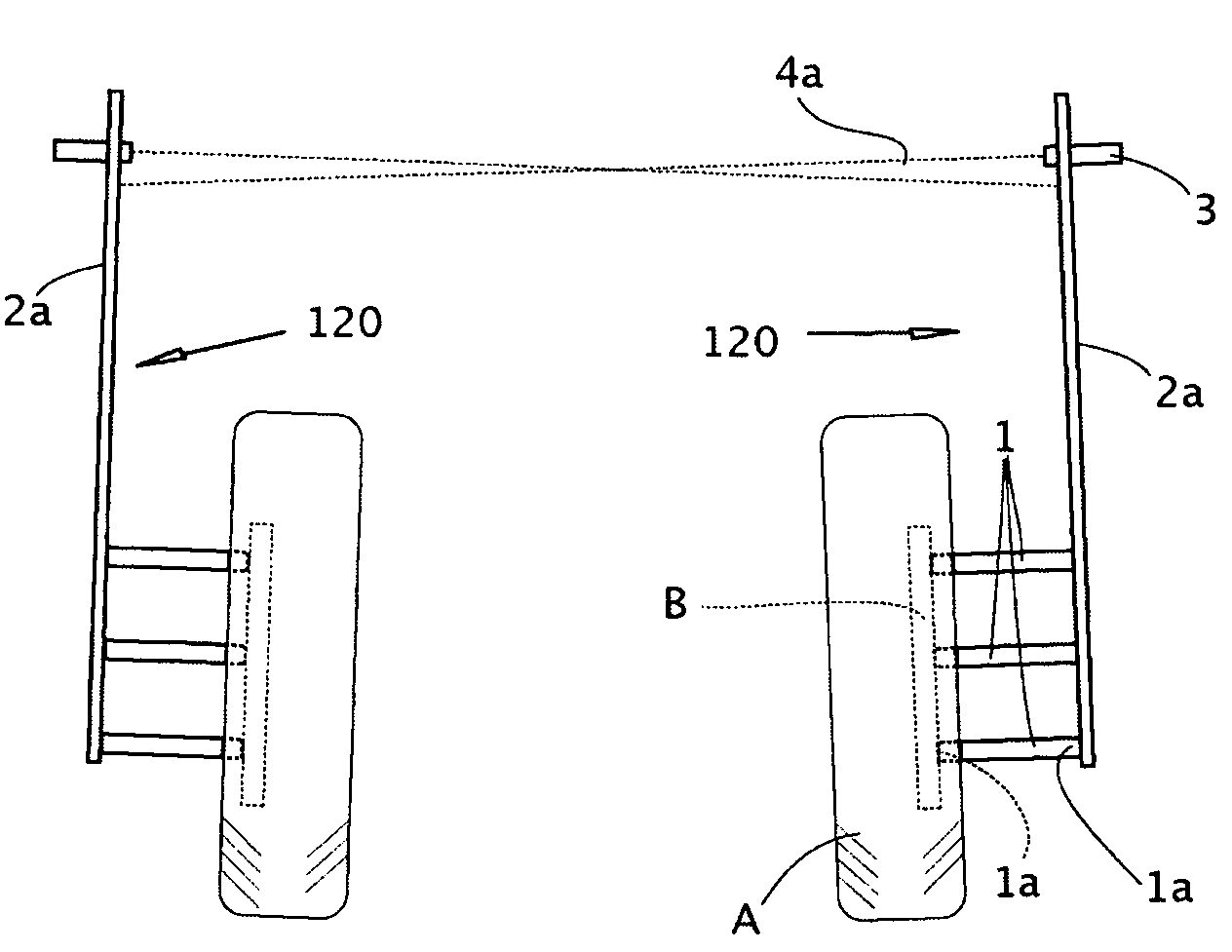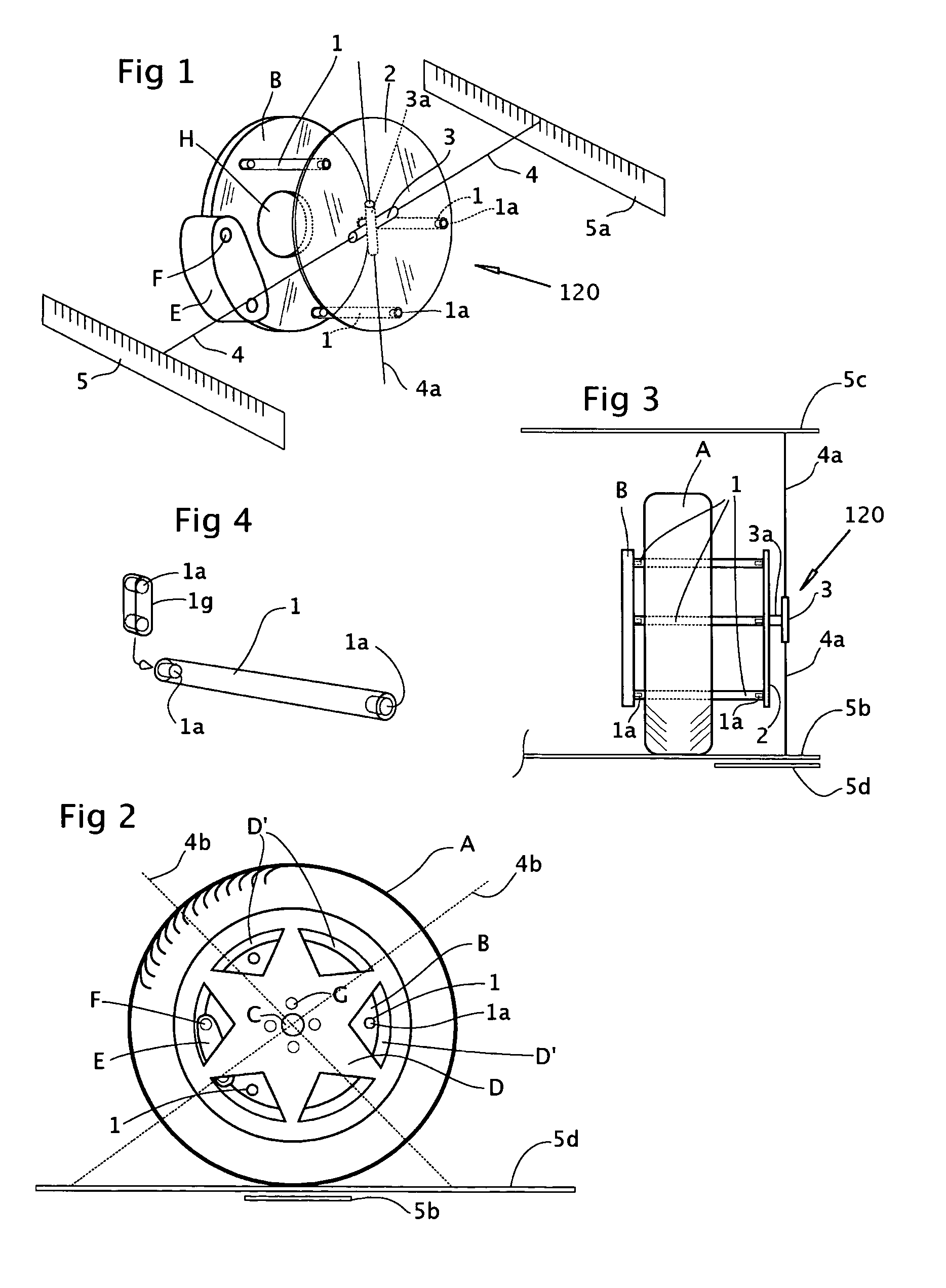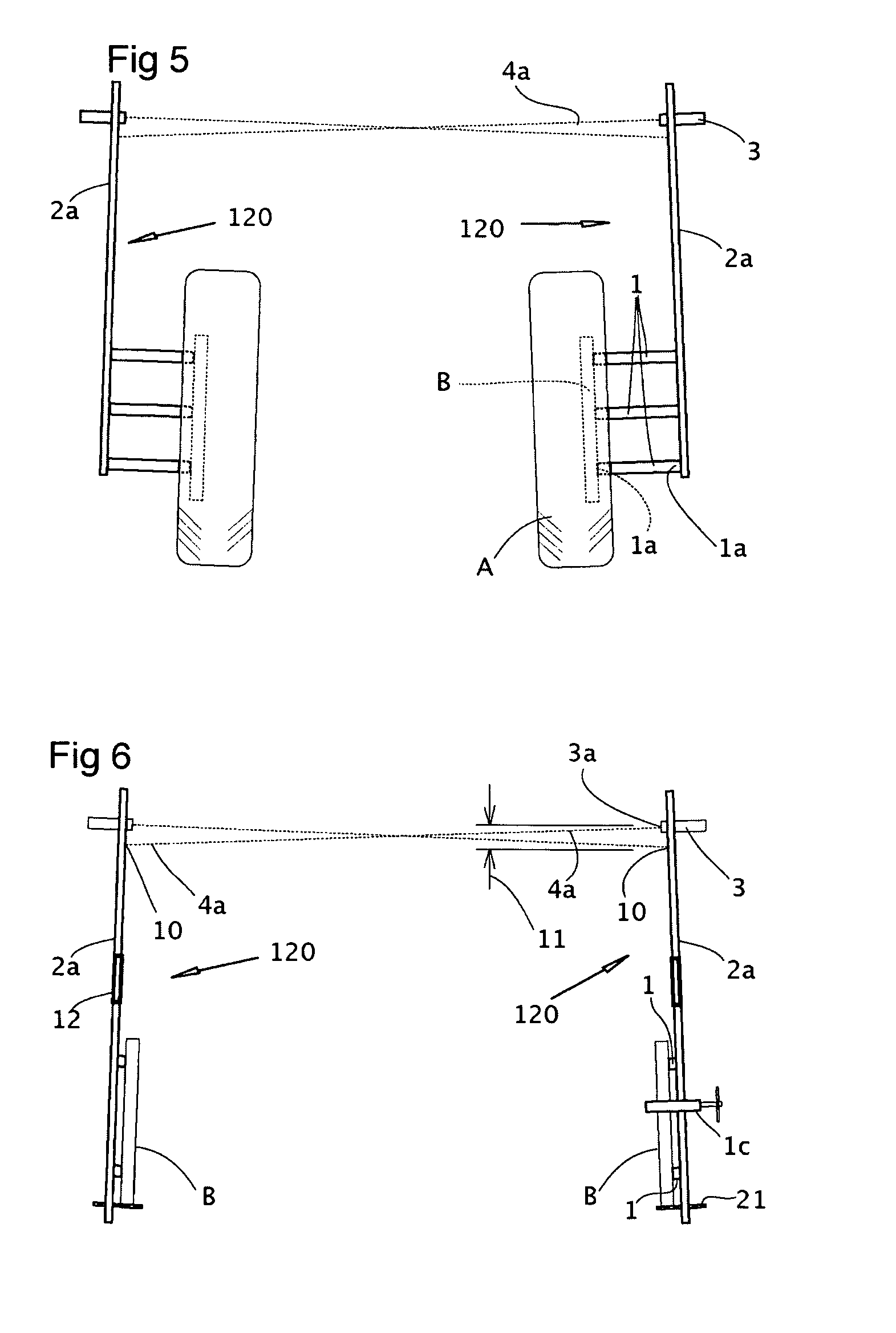Wheel alignment gauge
a technology of alignment gauge and wheel, which is applied in the direction of measuring devices, instruments, and using electrical means, can solve the problems of large space, high cost, and large size of existing wheel alignment machines, and achieve the effect of more accurate camber indication
- Summary
- Abstract
- Description
- Claims
- Application Information
AI Technical Summary
Benefits of technology
Problems solved by technology
Method used
Image
Examples
Embodiment Construction
[0029] Vehicle wheels are factory aligned (actually misaligned) in the forward plane to have a specific degree of “toe” (misaligned to aim forwardly towards or away from each other) and in the vertical plane to have a specific degree of “camber” (misaligned to aim vertically towards or away from each other).
[0030] Checking alignment of wheels using the present gauge is done from the perspective of the wheel's disc brake rotor B, which is necessarily precisely planar with the wheel. In the preferred embodiment shown in FIGS. 10-15, several equal length, square-ended extension rods 1 having magnets la at each end are used. The inboard ends of these rods 1 pass through wheel openings D′ and attach to rotors B. Plate 2 rests on ground G and attaches to the outboard ends of these rods 1. Plate 2 is therefore planar and parallel to rotor B and to wheel A and serves as the reference surface onto which alignment arms 2a are mounted to conduct the wheel alignment check.
[0031] Two alignment...
PUM
 Login to View More
Login to View More Abstract
Description
Claims
Application Information
 Login to View More
Login to View More - R&D
- Intellectual Property
- Life Sciences
- Materials
- Tech Scout
- Unparalleled Data Quality
- Higher Quality Content
- 60% Fewer Hallucinations
Browse by: Latest US Patents, China's latest patents, Technical Efficacy Thesaurus, Application Domain, Technology Topic, Popular Technical Reports.
© 2025 PatSnap. All rights reserved.Legal|Privacy policy|Modern Slavery Act Transparency Statement|Sitemap|About US| Contact US: help@patsnap.com



